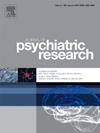Utilization of mental health care among people bereaved by suicide in Norway: A trajectory analysis
IF 3.7
2区 医学
Q1 PSYCHIATRY
引用次数: 0
Abstract
Background
Losing a loved one to suicide is an extremely stressful event that is associated with mental health issues. However, little is known about the health care utilization of those bereaved by suicide. Identifying distinct trajectories of mental health care utilization can help reveal gaps in service provision, barriers to access, and opportunities for targeted interventions.
Aims
To uncover distinct patterns of mental health care utilization in association with suicide bereavement and explore sociodemographic factors and subsequent suicide risk associated with these patterns.
Method
We analyzed Norwegian population-wide registry data on mental health care utilization at three different levels among 14 781 adults bereaved by suicide from 2010 to 2019 using group-based multi-trajectory modeling to identify groups with distinct mental health care utilization trajectories. Socio-demographic differences between trajectory groups were analyzed in multinomial logistic regression models and the associated risk of suicide was obtained with cox proportional hazards regression models.
Results
We identified four distinct trajectories of mental health care utilization. Two distinct groups of individuals bereaved by suicide either rarely contacted mental health care providers (“Low”) or only consulted with general practitioners only ("GP only"). In the latter group, the utilization rate increased post-bereavement. One group of bereaved ("Acute increase") increased their mental health care utilization significantly after the loss, while another group ("High") consistently had a high utilization rate. These groups differed with respect to kinship to the deceased and sociodemographic factors. Individuals in the “GP only” and “High” group had significantly higher risk of suicide when compared to those in the “Low” group.
Conclusions
Individuals bereaved by suicide exhibited diverse patterns of mental health care utilization, reflecting a broad spectrum of needs and responses to loss.
挪威自杀者对精神卫生保健的利用:轨迹分析
因自杀而失去所爱的人是一件极具压力的事情,与心理健康问题有关。然而,人们对自杀者的医疗保健利用情况知之甚少。确定精神卫生保健利用的不同轨迹可以帮助揭示服务提供方面的差距、获取障碍和有针对性干预措施的机会。目的揭示与自杀丧亲相关的精神卫生保健利用的独特模式,并探讨与这些模式相关的社会人口因素和随后的自杀风险。方法采用基于群体的多轨迹模型,分析2010年至2019年挪威14781名自杀身亡的成年人在三个不同水平上的精神卫生保健利用登记数据,以确定具有不同精神卫生保健利用轨迹的群体。采用多项logistic回归模型分析不同轨迹组的社会人口统计学差异,采用cox比例风险回归模型分析自杀相关风险。结果我们确定了四种不同的精神卫生保健利用轨迹。两组因自杀而失去亲人的人要么很少联系精神卫生保健提供者(“ Low “),要么只咨询全科医生(”GP ”)。在后者中,利用率在丧亲后增加。一组失去亲人的人(“急剧增加”)在失去亲人后显著增加了对精神卫生保健的利用,而另一组(“高”)的利用率一直很高。这些群体在死者亲属关系和社会人口因素方面存在差异。与“低”组相比,“只看全科医生”和“高”组的个体自杀风险明显更高。结论自杀丧亲个体对精神卫生保健的利用模式多样,反映了对丧亲的广泛需求和反应。
本文章由计算机程序翻译,如有差异,请以英文原文为准。
求助全文
约1分钟内获得全文
求助全文
来源期刊

Journal of psychiatric research
医学-精神病学
CiteScore
7.30
自引率
2.10%
发文量
622
审稿时长
130 days
期刊介绍:
Founded in 1961 to report on the latest work in psychiatry and cognate disciplines, the Journal of Psychiatric Research is dedicated to innovative and timely studies of four important areas of research:
(1) clinical studies of all disciplines relating to psychiatric illness, as well as normal human behaviour, including biochemical, physiological, genetic, environmental, social, psychological and epidemiological factors;
(2) basic studies pertaining to psychiatry in such fields as neuropsychopharmacology, neuroendocrinology, electrophysiology, genetics, experimental psychology and epidemiology;
(3) the growing application of clinical laboratory techniques in psychiatry, including imagery and spectroscopy of the brain, molecular biology and computer sciences;
 求助内容:
求助内容: 应助结果提醒方式:
应助结果提醒方式:


